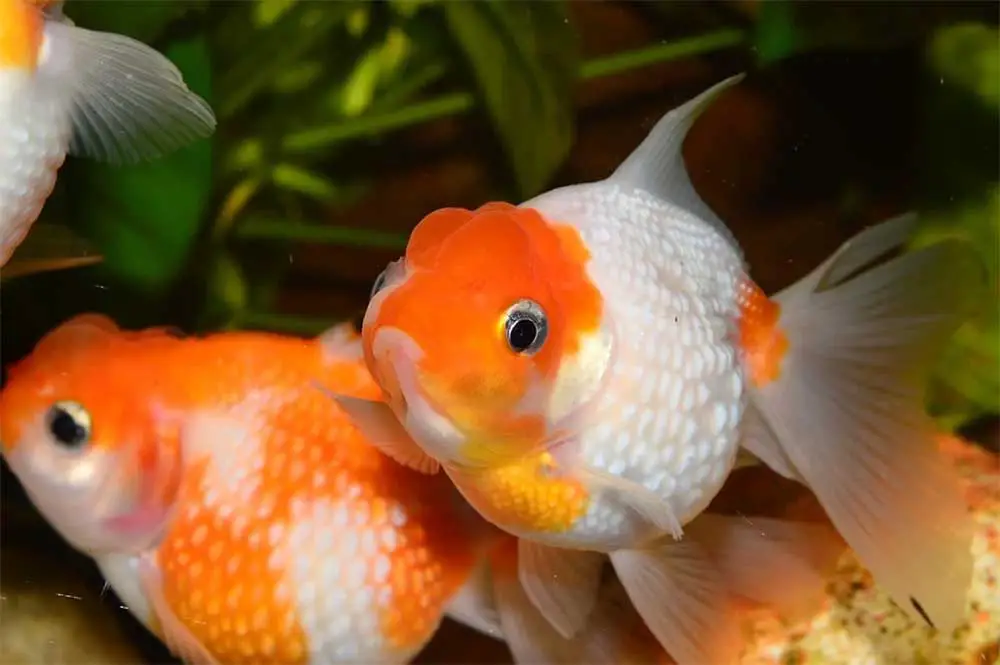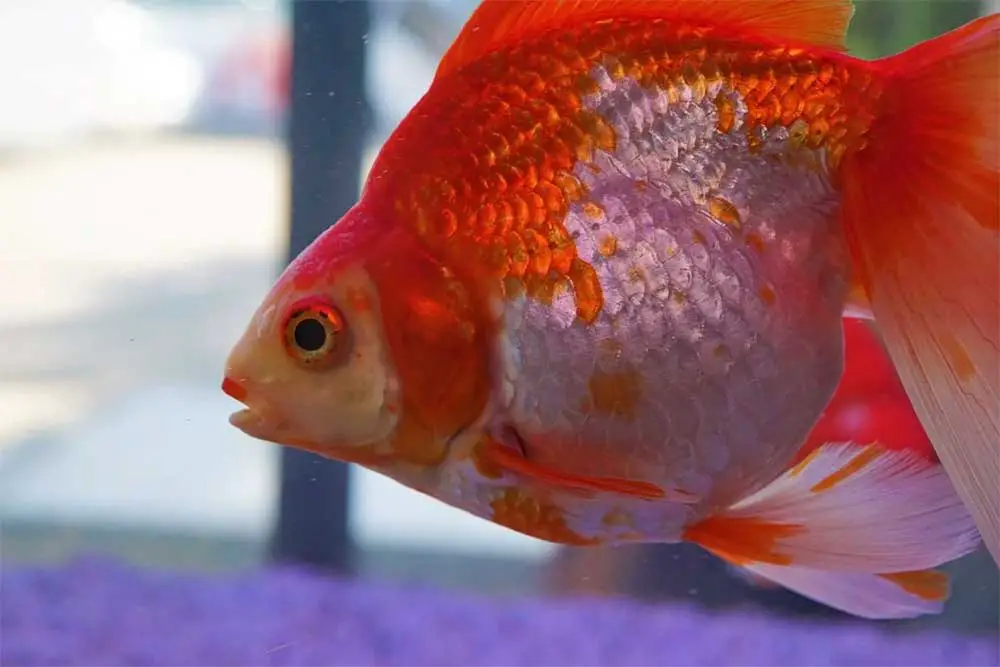If you’re looking for a suitable species of aquarium fish to home in your fish tank, there aren’t many options better than a goldfish.
Goldfish are easy to please with a wide variety of foods, can tolerate an equally wide range of water conditions, and are relatively fit and robust.
They’re also incredibly efficient breeders - capable of spawning just one year into their life, and up to 1,000 eggs at a time.

In outdoor environments, goldfish can spawn once a month during the warmer months of the year, whilst indoor conditions see them reproduce all year round.
This guide will take an in-depth look at “pregnancy” in goldfish, including what to look out for, and how best to manage the process.
The Biological Basics
Firstly, it’s important to highlight that goldfish can’t actually be pregnant in the typical sense. Instead, they’re an egg-laying species.
In other words, they don’t give birth to live fish - the eggs remain outside of the goldfish’s body until they hatch and the baby fish become free-swimmers.
Gender Differences
In terms of differentiating between male and female goldfish, there are a couple of key distinguishing features to take note of.
Females are typically rounder, even when they’re not carrying eggs. When carrying eggs, they tend to look a little rounder on one side of their body.
A female’s anal vent will protude slightly; especially when they’re ready to breed. Their pectoral fins will also be shorter and more rounded.
On the other hand, males are slimmer, and have pointed pectoral fins which are longer in length.
If you have a feeling that your goldfish are ready to breed, check your male fish for spawning tubercles. These usually appear as small, white bumps on their head, gill covers, and pectoral fins.
Potential Signs Of A “Pregnant” Goldfish
There are a number of key signs to look out for which suggest your female goldfish may be carrying eggs. Below we’ve taken a closer, in-depth look at four of the most common indicators of this.
1). Enlarged or lopsided belly
If you notice that your goldfish’s belly is a little rounder or chubbier than usual, this is a telling sign that they may be carrying eggs.
Swelling however, can also be a sign of illness. This is a factor to take into consideration before automatically assuming that your female fish is pregnant.
Some of the most common illnesses that may cause your goldfish to look larger than normal include abdominal infections, organ failure, and dropsy.
Of course, your goldfish may also look rounder if they’re being overfed. Overfed goldfish end up storing too much fat in their body, which is not only visible, but harmful for their overall health.
When looking from above, a lopsided belly can be seen on many female goldfish. More often than not, this is a result of her eggs filling one side of her body more than the other.
2). Being chased by other goldfish
Female goldfish are chased by others when their eggs are ready to be released, and they subsequently start exuding special pheromones into the water. These pheromones signal to male goldfish that they’re in breeding condition.
It’s easy to mistake this chasing for bullying, as males will actively pursue the females from behind, nudging them underneath their stomach. This action releases the female’s eggs, allowing the male goldfish to fertilize them with his milt.
3). Eggs coming out when picked up
A conclusive sign that your female goldfish is expecting, is if eggs come out when you pick her up. If this happens, it’ll mean that there are an abundance of eggs inside her, and that she’s in optimal spawning shape.
As crude as it may sound, a male fish is often exactly what’s needed to help lighten her load.
It’s important to note that it isn’t recommended for anyone other than experienced breeders to try to squeeze the eggs out of their goldfish. Without the right understanding and technique, it can cause potential damage to the fish, as well as a significant amount of stress.
4). Breeding tubercles on males
Just to be clear, this definitely isn’t a sure sign that your goldfish is pregnant.
But during spawning season, it’s often the case that males will exhibit breeding tubercles on both their pectoral fins and gill covers. These often look like tiny white dots.
While the presence of breeding tubercles doesn’t necessarily guarantee anything, they do indicate the possibility that your fish may have gone into spawning season.
Feeding

Feeding your “pregnant” goldfish suitable and sufficient food is important for their well-being during the spawning process.
For a typical adult goldfish, one meal a day is enough. When spawning, however, your goldfish will have greater physical demands such as carrying their eggs and courtship (the communication between mates).
Therefore, it’s important to take care of them with more frequent feedings, usually either two or three times a day.
It’s also recommended that you feed them protein-rich foods such as bloodworms or brine shrimp up to three times per week.
Spawning
When the conditions are right, and your goldfish is ready, she’ll release hundreds of eggs into the tank at a time. Unfortunately, not all of them will survive.
The eggs will typically attach themselves to plants, or if you’ve added one, a spawning mop.
It’s then up to the male goldfish to release their milt in order to fertilize the eggs. In total, the process can take up to four hours.
Fertilized eggs will exhibit a yellow, transparent color, whereas unfertilized eggs turn a shade of milky white.
Hatching
For faster hatching times, water temperatures around 84℉ or 29℃ are most effective. If however, you’re after longer hatching times, a cooler temperature around 75℉ or 24℃ is best.
After the fry have hatched, it’s normal to see them stationary near the bottom of the tank or along the tank’s sides. So, don’t worry, they’ll be free-swimming within a few days.
At first, they won’t look much like goldfish, but over the first few weeks, they’ll grow and develop.
Early Feeding And Care
There’s no need to feed your fry over the first few days as they’ll use their egg sacs as a food source. After this initial period, you can feed them commercial fry food, daphnia, or baby brine shrimp.
At this super young age, start off by feeding them three times a day. However, as your fry grow into junior goldfish, you can reduce the number of feedings to twice per day.
In terms of early care, it’s recommended to keep young fish in a separate tank first of all. This allows them to grow to a large enough size to survive and not just be seen as food when transferred into an adult tank.
Tank Setup
To maximize the survival rate of your goldfish eggs, set aside a 10-20 gallon breeding tank in which they can develop and hatch effectively without interference from other fish.
Using the water from your adult tank, fill the breeding tank to a depth of roughly eight inches. The best method of retrieving the eggs from the adult tank is to use a spawning mop.
Water Temperature Quality And Temperature
Sudden increases in water temperature can harm your goldfish so make sure to closely monitor the temperature and gradually increase it.
Eggs hatch best at temperatures around 75℉ or above, and with a pH in the range of 6.0 to 8.0.
Be mindful that the increased food intake during spawning may subsequently result in higher levels of waste in the tank.
Dirty water is to be avoided at all costs. Not only does it promote fungus growth in unfertilized eggs, it can also spread to healthy eggs and kill the developing fry.
Therefore, to prevent this, change up to 20% of the water in your tank daily and remove any unfertilized eggs. As mentioned earlier, these are usually milky white.
Useful Equipment
In terms of extra equipment for your fish tank, there are a couple of valuable additions that we recommend.
Firstly, a high-quality filter to keep your water clean. These come in a wide variety of different options, but try and opt for one that produces a low current as goldfish prefer more still waters.
A heater is equally useful for your tank and will allow you to accurately control the water temperature. Adjusting temperatures at certain points during the spawning process can help stimulate spawning and control development times for the eggs.
Frequently Asked Questions
How long do goldfish stay pregnant?
Goldfish are egg layers, so don’t technically experience pregnancy. Females can rapidly produce eggs and are often ready to spawn as frequently as once a month.
Do goldfish hide when pregnant?
Goldfish that are close to laying their eggs often slow down and may appear sluggish with their behaviour. Some fish will also hide, or “nest” in the shelters and plants inside your tank. It’s also worth noting that pregnant goldfish start to eat less when they’re getting ready to spawn.
Do goldfish eat their own babies?
Yes, it’s highly possible that goldfish may eat their eggs and newly-hatched fry. This is because the fish don’t have any paternal instincts, so they don’t recognize their own babies.
The best way to prevent this from happening is to set up a seperate tank for the eggs to safely hatch. A spawning mop makes it easier to remove the eggs from your main tank and transfer them to a breeding tank.
Why is my goldfish at the bottom of the tank?
There are numerous reasons why your goldfish may be loitering at the bottom of the tank. Some of the most common conditions which can cause this are poor water quality, loud noises, bad nutrition, or they are simply sleeping.
Final Thoughts
While goldfish, on the whole, may seem easy to care for, there are a number of factors to take into account during the spawning process.
Whether it’s the temperature of the water or sufficient separation from parents, goldfish babies require certain conditions to ensure healthy growth.
Hopefully, with the information from this guide fresh in your mind, you’ll know exactly what to do when it comes to breeding your goldfish.

